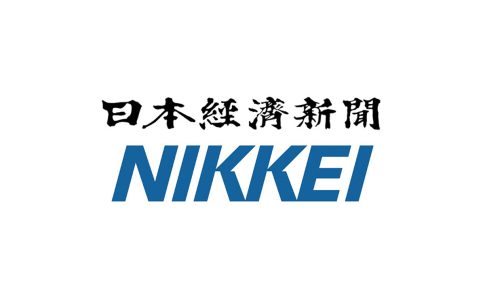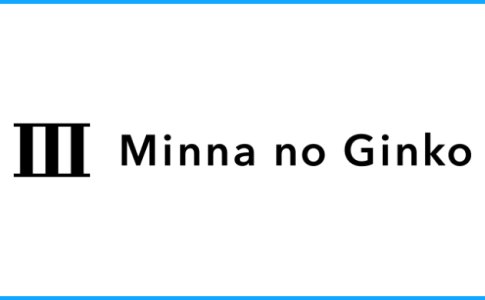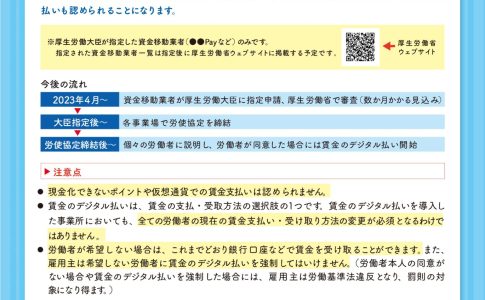As the trend away from newspapers accelerates, it has been revealed that the Asahi Shimbun’s morning newspaper sales finally fell below the 4 million mark in September.
According to several sources close to the newspaper, the actual sales are estimated at around 3 million copies, excluding “forced sales,” which force dealers to buy more than the number of subscribers. According to an official of the newspaper, if the number of copies is reduced at the rate of 400,000 a year, it will be 0 in 7 to 8 years. No new source of revenue has yet been found to replace the ever-declining print newspapers, and time is running out.
According to figures compiled by the ABC Society of Japan, the Asahi Shimbun’s morning newspaper sold 3993803 copies in September, down about 34000 copies from the previous month and down a significant 620,000 copies from the same month last year. In part, though, sales people say, the company has made significant progress in cleaning up its pushpaper over the past year.
Considering that the average for the second half of 1963, the first survey by the ABC Society, was about 4.36 million copies, it seems to be the first time in about 60 years that the circulation has fallen into the 3 million range. From the end of the 1980s to 2009, the number of copies kept at the 8 million level, but the decline gradually increased. The number fell below 7 million in December 14, 6 million in February 18 and 5 million in August 20. In the 13 years since 2009, it has halved, meaning it has lost 4 million copies.
In the newspaper industry as a whole, including the Asahi Shimbun, the majority of newspaper subscribers are those over the age of 70. According to the National Time in Life Survey conducted by the NHK Broadcasting Culture Research Institute in 20, 30% of all people read newspapers for more than 15 minutes on weekdays, but 59% of those aged 70 or older did so. Among those in their sixties, the figure is less than half at 44%, with 29% in their fifties, 14% in their forties, 5% in their thirties, and 2% each in their twenties and teens, a dismal figure.
The “2025 cliff,” in which baby boomers, the core subscriber base, will all be older than 75, is just 3 years away. It is highly likely that the exit of the elderly from the newspaper market in the next 5 to 10 years will lead to a further decline in circulation.
Sales have fallen sharply in line with the decline in the number of copies sold.
The Asahi Shimbun’s sales in fiscal 21 were 188.1 billion yen, down 100 billion yen over 7 years from 288.6 billion yen in fiscal 14, when the company was rocked by issues such as false reports on comfort women and the Yoshida report on the Fukushima No. 1 nuclear accident.
During this period, the company managed to avoid the deficit until fiscal 19 by cutting personnel costs and selling securities and land through personnel cuts, but the contracted equilibrium continued. In fiscal 20 (with sales of 210.2 billion yen), the company posted a huge deficit of 45.8 billion yen, and it is still fresh in our memory that then president Masataka Watanabe resigned to take responsibility for the management of the company.
The 2023 Medium-Term Management Plan, announced by current president Shiro Nakamura when he took office in April 21, states that the company will reduce the number of employees by 500 to 3800 by the end of fiscal 23. Among them, the editorial department (Reporter, Editorial Desk), which has 2100 members nationwide, will be reduced by 400 to 1700.
The idea of having the editorial department shoulder the bulk of the job cuts was met with a flurry of concern not only from within the company but also from alumni that it would lead to a “weakening of local news networks”. While they understand that downsizing is inevitable, they probably believe that there is still room for further consideration on how to maintain their reporting capabilities amid this situation.
To reverse the trend, cutting costs is not enough and sales need to increase. Nakamura, recognizing that it has become difficult for a single “big tree” such as the newspaper business to bear enough fruit to enrich the entire group, has put forward a plan to transform the business structure by cultivating digital, real estate, events, education, intellectual property and mail order businesses.
However, the current situation in the newspaper business is even more severe, and it is now possible that newspaper revenues will be infinitely close to zero. In light of these circumstances, areas other than digital, with Asahi Shimbun Digital, and real estate, which generates billions of yen in annual profits, are not profitable businesses.
If we assume that the number of paper newspapers is going to dwindle endlessly, we still have no choice but to rush to secure a new main source of revenue to replace it. It would be desirable to find this in the field of news reporting in terms of the social responsibility and mission of newspaper companies.
Real estate has been steadily profitable, to be sure, but it seems difficult to make it a major pillar in terms of scale. Even if it were able to make a bigger profit, it could be ridiculed as the Asahi Real Estate Newspaper Company.
When it comes to finding revenue streams in the news business, the question becomes whether to focus on sales revenue (subscriptions) or advertising revenue. Looking at advertising revenues, the decline in newspaper advertising revenues shows no signs of stopping, so digital advertising is likely to find a way out, but given the current situation in which 1 page view (PV) is said to be around 0.1 yen, Asahi Shimbun Digital’s monthly PV of 233 million (20 average) is far from enough to support the company’s backbone with advertising. The Asahi Shimbun’s other online outlets are unlikely to change that.
After all, isn’t there no other way but to expand the revenue from digital sales and grow it into a mainstay like the New York Times (NYT) and the Nikkei? Perhaps in recognition of this, on August 22, the Asahi Shimbun abolished the free membership system of Asahi Shimbun Digital and shifted to a fully paid system, in which all articles must be paid in principle.
Free subscribers were apparently prompted to sign up for a paid membership because they could no longer read the five monthly “membership articles” they were previously allowed to read by switching to “Asahi ID members”. However, some bulletins will continue to be distributed free of charge as part of its journalistic duty, he said.
As of July, there were more than 830,000 paying subscribers to the preceding Nikkei electronic edition (first published in 10). By contrast, Asahi Shimbun Digital, which started a year later, has been at a standstill for the past few years, with the number estimated at about 300,000 based on statements from past presidents, although the company does not disclose the number of paying subscribers. In the case of the Nikkei, the ratio of electronic to print newspapers (1.7 million as of September) has approached almost 1: 2. In the case of the Asahi Shimbun, by contrast, the digital-to-newspaper ratio remains roughly 1: 13.
Getting rid of free subscriptions isn’t enough to increase the number of paying subscribers, but rather “one-of-a-kind content you can only read here” that readers can pay for. For example, the NYT and the Wall Street Journal (WSJ: 3 million), which are expanding their 6.14 million digital editions, are using their investigative journalism and scoop to win over readers.
Asahi Shimbun Digital will also need content adapted to digital media, such as investigative reporting in areas where Asahi Shimbun excels, such as judicial relations, medical care, nursing and health, education, child rearing, and diversity, as well as painstaking and in-depth articles, scoops, content using data journalism techniques, and video.
More than a few people still identify with the liberal journalism the Asahi Shimbun has fostered and its worldview. To get those readers to understand the value of the content and pay for subscriptions, don’t be reluctant to pay for coverage here. Another idea might be to restore the Special Press Department-like department, which was abolished in 14 in response to the Yoshida report scandal. Furthermore, from the perspective of “content that can only be read here,” there will be a need to coordinate distribution with external media such as Yahoo News. If you can read the same content on free sites like Yahoo News, no one will want to subscribe to the paid Asahi Shimbun Digital.
Basically, it is common practice to distribute general news that occurs every day to outside media, while allowing people to read investigative reports, in-depth articles, and scoops exclusively through Asahi Shimbun Digital. The future will not open if this point remains vague.
The circulation of paper newspapers, whose primary audience is people over the age of 70, will continue to decline.
Now that smartphones are reaching older people and more people are reading news for free, it seems unlikely that older people will return to newspapers once they’ve left, and less likely to move to paid digital versions. Therefore, to expand the digital version, one must be prepared and enthusiastic to remake it into an entirely new medium, the so-called “new Asahi Shimbun,” aimed at people other than the elderly.
More than a few Asahi Shimbun insiders seem to be pessimistic about the future of Asahi Digital, saying that “our company does not have killer content like Nikkei’s economic information” and “it is not possible to publish information like the NYT, which is at the political and economic center of the world.”. But given the rapid decline in paper circulation, perhaps the time has passed to debate whether it will work or not. We’ve reached the point where we can’t stand as a news medium unless we grow digital into a major revenue stream. Its success will depend on its ability to produce compelling content that makes readers want to pay to read it.
Based on the article of FACTA magazine. Kimiaki Isaka.
https://facta.co.jp/article/202211041.html












Leave a Reply